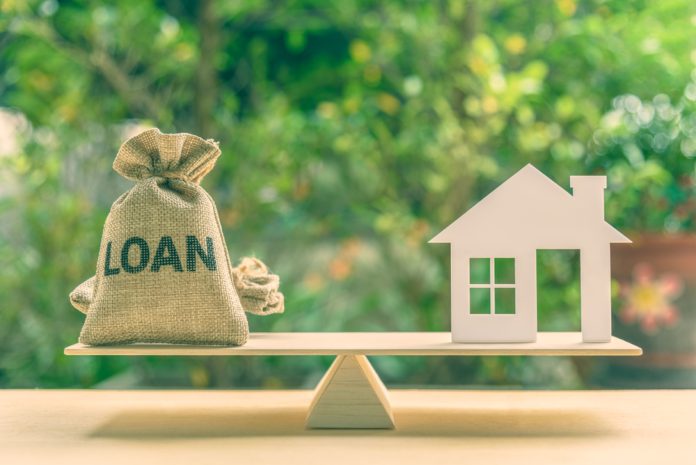Mortgage Down Payments: What You Need to Know
One of the biggest considerations when buying a new home is the down payment. Is it better to put more money down and reduce the loan amount, or is it better to keep more funds in pocket for other expenses you may incur in your new home? These are just two factors that influence how much money to put down on your home purchase.
In this guide, we’ll discuss down payments, how putting different amounts down can change the financial equation of your mortgage, and even how to save up for a down payment. This is our guide to mortgage down payments and what you need to know before you buy a house.
Key Takeaways
|
What is a Mortgage Down Payment?
A mortgage down payment is the upfront money a homebuyer pays when purchasing a new home. The amount of a down payment is usually noted as a percentage of the overall purchase price. For example, a 10% down payment on a $300,000 home purchase would be $30,000.
The rest of the purchase price is covered by a mortgage loan, which the buyer repays with interest over a number of years. The down payment provides equity in the house, which gives the lender security in the event the borrower defaults on the loan.
The down payment required varies depending on the mortgage loan type. It usually ranges between 3% and 20% of the home’s purchase price. However, some government-backed lending programs don’t require a down payment. Note that down payments of less than 20% may result in private mortgage insurance (PMI) being added to the mortgage payment.
| NOTE: If your down payment is less than 20%, your mortgage payment may include private mortgage insurance (PMI). This is sometimes added if you have borrowed more than 80% of the home’s value. You can request PMI to be removed once you reach 20% equity in your home, and it must be removed once the loan balance reaches 78% of the original home value. |
How Much Do You Need for a Down Payment?
Depending on your financial situation, the type of loan you choose, and the lender’s requirements, you may not have to put down more than 3% of the purchase price with conventional loans. Some government lending programs require no down payment.
Here is a chart with four types of loans, the minimum or range of down payments required, and an example of how much that down payment would cost on a $300,000 home purchase.
| Loan Type | Down Payment % | Down Payment on $300,000 Purchase |
| Conventional Loans | 3% to 20% | $9,000 to $60,000 |
| FHA Loans (Credit Score > 580) | At least 3.5% | $10,500 |
| FHA Loans (Credit Score 500-579) | At least 10% | $30,000 |
| VA Loans | None | $0 |
| USDA Loans | None | $0 |
| Jumbo Loans | At least 5% to 10% | $15,000 to $30,000 |
Here are the types of loans listed above and a brief description:
- Conventional Loans: A standard mortgage loan offered by every lender. Requires between 3% to 20% down, although amounts less than 20% down may result in PMI being added to your loan.
- Federal Housing Administration (FHA) Loans: These are loans insured by the U.S. Department of Housing and Urban Development. If you have a credit score of at least 580, you can put as little as 3.5% down for this type of loan. People with credit scores between 500 and 579 must put at least 10% down.
- Veterans Affairs (VA) Loans: The U.S. Department of Veterans Affairs offers VA loans to help veterans, service members and eligible surviving spouses become homeowners. These loans do not require a down payment.
- United States Department of Agriculture (USDA) Loans: These loans are designed for rural and suburban homebuyers. These often don’t require down payments as well.
- Jumbo Loans: For loans that don’t meet conforming loan sizes, you must put at least 5% to 10% down. Down payments used to be larger for these types of loans. Depending on your credit score, you may be required to put down a larger down payment. Check out the Federal Housing Finance Agency for the latest information on what qualifies as a jumbo loan.

Benefits of a Larger Down Payment
Making a larger down payment on your home purchase is important for several reasons.
- Reduces Loan Amount or Term: The more money you put down, the less you have to borrow. This allows you to either have a lower monthly payment or potentially take out a shorter-term mortgage because you borrow less money.
- Influences Interest Rates: Some lenders will lower the mortgage loan’s interest rate if the borrower puts down more money. A higher down payment provides more equity in the house, reducing the lender’s risk.
- Avoids Private Mortgage Insurance (PMI): To avoid PMI, which doesn’t help pay down your loan, make a down payment of at least 20%. This can save you thousands of dollars, especially early in the life of the loan.
- Increases Equity: You will start with more built-in equity in the home with a larger down payment. While we mentioned that this reduces risk to the lender, it also allows you to consider additional lending products like home equity lines of credit (HELOC) later with that extra equity.
- Higher Approval Chances: Lenders, especially smaller community banks, like customers to have a stake in a home purchase. A sizeable down payment makes you more likely to be approved for a mortgage loan.
Drawbacks of Making a Large Down Payment
While a large down payment has many benefits, it might not be right for your situation. Consider these reasons for not making a large down payment when purchasing a house.
- Depleting Savings: If you use up your savings buying your home, you may not have an emergency fund for unexpected expenses after moving into your new home.
- Reduces Repair Budget: While ideally, you won’t have any major construction projects after moving into your new home, there could be some repairs and renovations you’d like to make. A large down payment might limit those renovations after you move in.
- Delaying Homeownership: Waiting until you save 20% for a down payment might make the dream of owning a home hard to achieve. By the time you have that money saved up, home prices could have increased, or your dream house might already have sold.
- Opportunity Cost: Money spent on a down payment is money not invested in stocks and bonds. A smaller down payment might allow you to invest the remainder of those funds, allowing you to earn passive income.
Impact of Down Payment on Monthly Payments
When considering your down payment amount, it might be a good idea to use a mortgage calculator to determine your payments in each scenario. Also, remember that if you put less than 20% down, you may have to add PMI payments.
For this example below, we will use a PMI calculation of 1.5% of the loan amount. PMI can range between 0.5% and 6% of the loan amount, depending on the loan type and your credit score, among other factors. We will base this example on a $300,000 home purchase and a 30-year mortgage loan at 7.125%. The total payment will not include escrowed property taxes and home insurance.
| % Down | $ Down | Loan Amount | Monthly Payment | PMI Payment | Total Payment |
| 5% | $15,000 | $285,000 | $2,184.00 | $375 | $2,559.00 |
| 10% | $30,000 | $270,000 | $2,083.00 | $375 | $2,458.00 |
| 20% | $60,000 | $240,000 | $1,881.00 | $0 | $1,881.00 |
Tips for Saving for a Down Payment
If you want to save for a down payment, there are several great ways to begin that process.
- Create a Budget: Before you can begin saving money, you need to have a clear picture of your income and expenses. Once you can determine how much excess income you have, you can begin to save.
- Open a Dedicated Savings Account: Once you have excess income, using a savings account allows you to set aside funds to keep from spending them and earn interest on those excess funds.
- Cut Unnecessary Costs: If you don’t have as much excess income as you’d like, you can review your expenses and see if any can be eliminated to increase savings.
- Explore Assistance Programs: You may be able to find state and local government programs that offer down payment assistance, especially for first-time homebuyers.
- Automate Savings: One of the most effective savings techniques is automatically transferring funds into your savings each pay period.
Down Payment Assistance Programs
As mentioned above, down payment assistance programs are available if you are struggling to save up funds for a down payment.
- Grants: Grants are funds that can help cover down payment costs that do not require repayment.
- Low-Interest Loans: There are low-interest loans available to use for down payments. This should be done before you begin the mortgage process, as you typically don’t want to take out new lines of credit while getting a new mortgage.
- Forgivable Loans: Forgivable loans are available, especially from government agencies, that require you to stay in a home for a set period of time. Once that time passes, the loan is forgiven. These loans can also be used for closing costs or other pre-closing expenses.
- Employer Assistance: Check with your place of employment to see if they offer any programs to help you with homebuying.
- Gifts: While there are rules about accepting gifts in the mortgage process, it is one possible avenue to consider. Check with your lender and agent for any limitations to receiving a gift for a down payment.
Bottom Line
Before you begin the mortgage process for buying a new home, it is essential to understand what down payment you will need to make to get the home of your dreams. Some loan types require no down payment, while others require at least a 3% down payment. Understanding the effects of a smaller down payment on your loan payment and loan terms is also important. Work closely with your lender and agent to understand your options so you can get the home you want with the down payment that best fits your budget.


